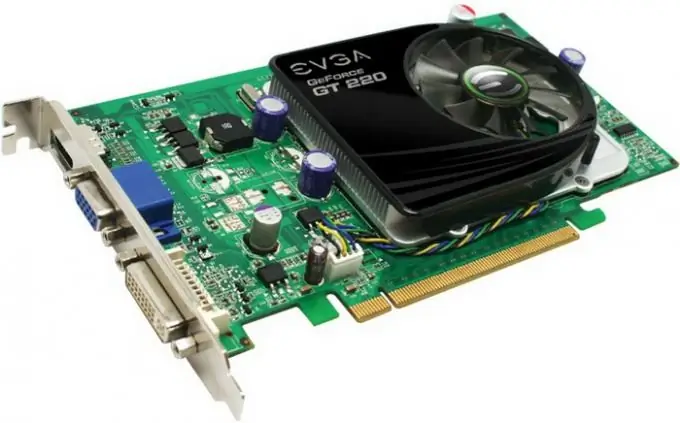Each new day brings innovations to the world of the gaming industry: the release of a new video game, the emergence of new software, the presentation of new opportunities at conferences dedicated to the video industry. But the computer of an ordinary user is not able to undergo all the changes and innovations in the world of computer games. A newly purchased video card may be outdated within a year - some of the games will no longer run on such a computer. There are only two ways out of this situation, excluding the purchase of a new video adapter: overclocking the video card and flashing the BIOS of the video card.

Necessary
BIOS update file of the video card, software that allows you to flash
Instructions
Step 1
Before embarking on such a responsible operation, make sure that the decision made is correct. Some problems can be solved with a new set of drivers. Sometimes the problems that worry you do not depend on the firmware. First, you need to know your video processor. Right-click on the desktop - click on "Properties" - open the "Options" tab - in the "Display" section you can see your card model.
Step 2
In order to flash the BIOS of the NVidia video card, you will need to download the firmware file, the boot floppy image and the NvFlash program. You must copy the floppy image to a floppy disk to run the firmware. In the BIOS settings of the motherboard, you should have the Floppy Disk value in the Boot section.
Step 3
Insert the floppy disk and restart your computer. When you have finished loading data from the floppy disk, enter the command nvflash -f mybios.bin. It is worth noting that mybios.bin is the name of the firmware file. You can call it whatever you like. When flashing the BIOS of a video card, the system saves the old firmware file under the name oldbios.bin. After the end of the firmware, restart your computer. Remove the floppy disk before rebooting.
Step 4
In order to flash the BIOS of an ATI video card, you will need everything the same, but from the manufacturer ATI. The name of the program that carries out the firmware is different - AtiFlash.
Step 5
The firmware operation in this case undergoes some changes. After finishing loading data from the floppy disk, enter the command atiflash -s 0 oldbios.bin. This will allow you to immediately save the old firmware file to a floppy disk. After restarting your computer, enter the atiflash -p 0 mybios.bin command. After removing the floppy disk, reboot.
Step 6
If the firmware of the video card failed, then you need to get an additional video card. You can take a very old card or buy the cheapest one, just to get an image on the monitor. Switch cables to another card. If necessary, install the drivers for the new card.
Step 7
To downgrade the old firmware for NVidia video cards, you need to get the video card code. When the computer boots up, enter the nvflash -a command. After that, you can enter the following command nvflash -i x -f oldbios.bin (x is the video card code). Turn off the computer - remove the second video card and check the functionality of the first card.
Step 8
To downgrade old firmware for ATI video cards, you need to obtain the video card code. When the computer boots up, enter the atiflash -i command. After that, you can enter the following command atiflash -p x myoldbios.bin (x is the video card code).
Step 9
Turn off the computer - remove the second video card and check the functionality of the first card.






